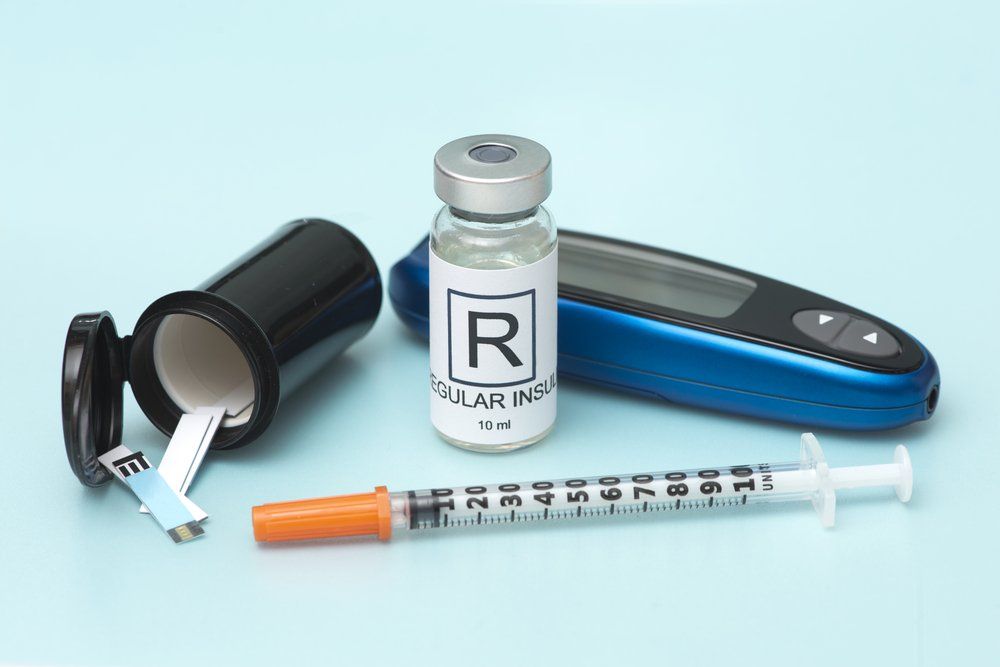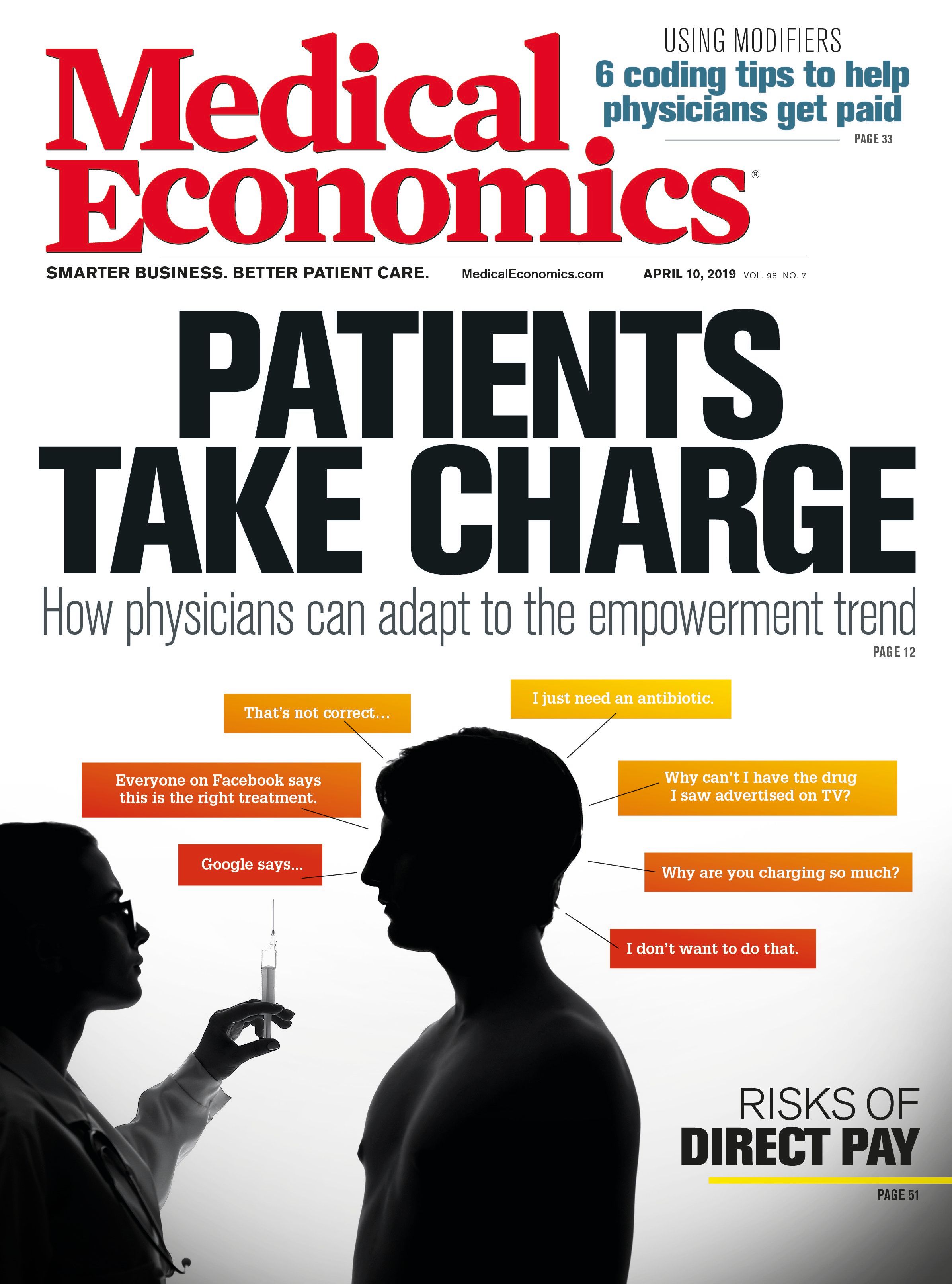Publication
Article
Medical Economics Journal
The rising price of insulin
Author(s):
How can physicians help their patients?
©Sherry Yates Young

Insulin, the life-saving medication that the more than 30.3 million Americans with diabetes require to live, is getting dramatically more expensive every year.
According to a report from a working group at the American Diabetes Association (ADA), the list price of insulin has nearly tripled since 2002 and the average price of insulin has increased by 64 percent since January 2014.
Some patients have to make hard choices between paying for their medicine or other basic life necessities, such as food and electricity, or are even rationing their insulin, a dangerous practice that can lead to death.
What is driving this exorbitant spike in cost for a drug that has remained largely unchanged since its discovery in the early 1920s? And what can physicians do to help their patients obtain the insulin they need?
Deane Waldman, MD, MBA, distinguished senior fellow in healthcare at the Texas Public Policy Foundation in Austin, Texas, says simply caring for patients is muddled by third-party entities, including the government, health insurers and pharmacy benefits mangers (PBMs).
This works against physicians being able to offer their patients the best care possible, because physicians are forced to prescribe from what are often limited medications available through a patient’s insurers and pharmacies.
“This whole third party in between the doctor and the patient is not only jacking up the prices [of medications] astronomically, we can’t really do what we think is best for our patient and give the patients the option to choose,” Waldman says.
Middlemen push up prices
Consumers perceive that their insurance plans pay for their prescription drugs, and the consumer simply pays the remaining co-pay. However, “[Insurance companies] haven’t paid for a prescription probably since the 70s,” says Aaron Heilaman, PharmD, owner of Tradition Drug in Ada, Okla.
Indeed, the supply chain for insulin is described as “complex” by an ADA working group organized to address insulin’s affordability problem. The working group writes that, due to the numerous stakeholders including manufacturers, PBMs, pharmacies, health plans, and employers, “There is no one agreed-upon price for any insulin formulation. The price ultimately paid by the person with diabetes at the point of sale results from the prices, rebates, and fees negotiated among the stakeholders.”
Health insurers farm prescriptions out to PBMs, typically to the top three: CVS/Caremark, Express Scripts, and OptumRx, which between then manage about 70 percent of the market, according to the ADA.
PBMs negotiate lower prices directly with the pharmaceutical companies, getting discounts on different medications.
“PBMs came along and said, ‘We can be Visa for you. We can streamline the process from the point of sale at the pharmacy back to the insurance company,’ ” Heilaman explains.
Therefore, in many cases, PBMs decide which drugs they’ll carry in their formulary and can add or remove a drug at their whim. The pharmaceutical companies then have to offer steeper discounts or “rebates” in order to have their drug included in a PBM’s formulary.
When PBMs manage the pharmacy benefit portion of a health plan, the ADA working group points out, they are beholden to their clients, health insurers and employers, not patients.
Though the three insulin manufacturers-Sanofi of France, Novo Nordisk of Denmark, and Eli Lilly and Co.-all make similar insulin, whichever company is willing to give the largest rebate is the one that gets put on the formulary, Heilaman explains.
“The United States healthcare game is not an open, free, fair market. It’s captive by big corporations that call all the shots,” he says.
Incremental patent changes
Another driver of higher cost, Waldman says, is that pharmaceutical companies have figured out ways to tweak drugs that are about to go off patent, enabling the manufacturer to extend the patent on the drugs or obtain new ones. This process prevents generic drug manufacturers from producing cheaper versions of the drugs.
“A drug company can take a known drug that is about to go off patent and simply combine it with another drug that never was on patent in the first place, and get a new patent,” Waldman says.
The pharmaceutical companies have come under fire for such practices but are not prevented from doing so.
Ways to get affordable insulin
Other than lobbying for legislative checks and greater transparency for PBMs and pharmaceutical companies, where does this leave physicians who just want to make sure their patients can get the insulin they need?
There are a variety of programs to which physicians can direct patients in need of financial help. Eli Lilly, Sanofi, and Novo Nordisk all offer patient assistance programs, but these are generally reserved for people whose income is less than $36,000 per year and who do not have health insurance.
Blink Health and Inside Rx are programs that may offer discounts of up to 40 percent on insulin compared to pharmacy prices.
According to the Juvenile Diabetes Research Foundation, several nonprofit patient and insulin assistance programs are available to help with the costs of Type 1
diabetes medication. They include:
- Partnership for Prescription Assistance, which is sponsored by pharmaceutical companies, doctors, patient advocacy organizations, and civic groups. It helps low-income, uninsured patients get free or low-cost brand-name medications.
- NeedyMeds maintains a free, extensive database of patient assistance programs, state assistance, medication discount programs, and free or low-cost medical care. The site also includes information on programs geared to help consumers through the application process.
- RxAssist is an online database of pharmaceutical company programs that provide free or affordable medicines and co-pay assistance.
- RxHope is an online resource patients can search for an assistance program according to the type of medication. It also helps with the application process.
- RxOutreach is a nonprofit mail-order pharmacy for uninsured or underinsured people.
- The National Institute of Diabetes and Digestive and Kidney Diseases (NIDDIK) publishes a resource called “Financial Help for Diabetes Care,” containing information about resources that may help with medical expenses of a person with diabetes. You can view this publication online or order copies from the National Diabetes Information Clearinghouse at 1-800-860-8747.
Older formulations of insulin
The JDRF also recommends that physicians with low-income, uninsured patients in immediate need of insulin seek out an older formulation of insulin that may be sold over the counter at Walmart or Sam’s Club. This insulin is typically sold under the name
ReliOn.
However, it does work differently than newer insulins, so physicians will need to be sure they help patients dose it correctly.
Oral medications and lifestyle changes for Type 2 diabetes
For patients with Type 2 diabetes who are taking insulin, lifestyle changes might be a way to reduce the amount of insulin they’re taking, or eliminate the need for it altogether, according to Megan Williams, MD, who is board certified in family and obesity medicine and owner of Elemental Weight Loss and Wellness Clinic in San Antonio, Texas.
“Physician to physician, don’t forget that there are lifestyle interventions that can be very powerful,” Williams says. “A major cost-reduction technique would be to try to move more, eat less, lower sugar and carb intake, and lose weight.”
Also, for Type 2 diabetes patients, she always looks for an oral insulin alternative that might be more affordable. “I’m a firm believer in evidence-based medicines over jumping straight to the most expensive thing, when the patient may not even be able to afford it,” she says.
Williams emphasizes the importance of physicians discussing cost with their patients before making any diabetes treatment plan, since it won’t do any good if the patient can’t afford it.
“I always make sure that patients that are having struggles [financially] contact the manufacturer directly because usually they’ll offer some type of discount,” she says.
Eli Lilly to sell cheaper insulin
In the wake of massive negative media attention to the plight of people who are unable to afford their lifesaving insulin, drug maker Eli Lilly has announced that they will begin to sell a cheaper insulin.
The new version will be an “authorized generic” of Humalog 100, according to the New York Times, and will sell for $137.35 per vial, which is a 50 percent discount from the list price.
The new drug, though identical to Humalog, will be called Insulin Lispro. Eli Lilly will continue to sell Humalog 100 at its regular price to insurers and employers.
Affordable insulin advocates hope this move pushes other drug companies to follow suit.






